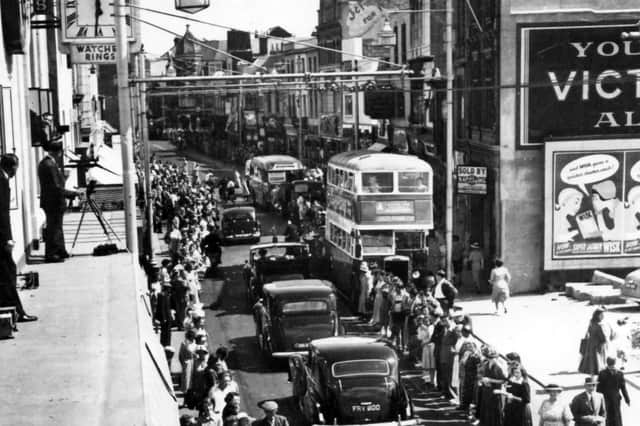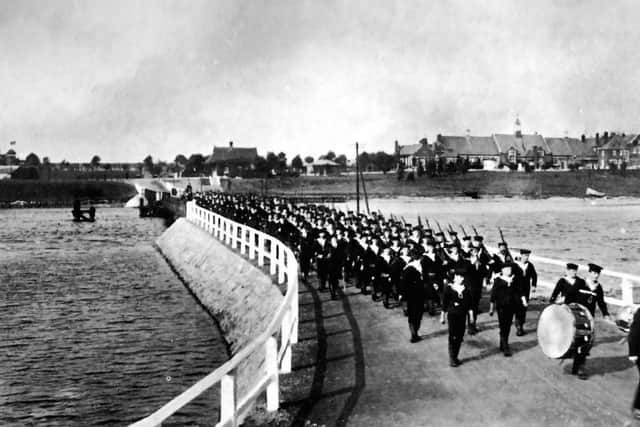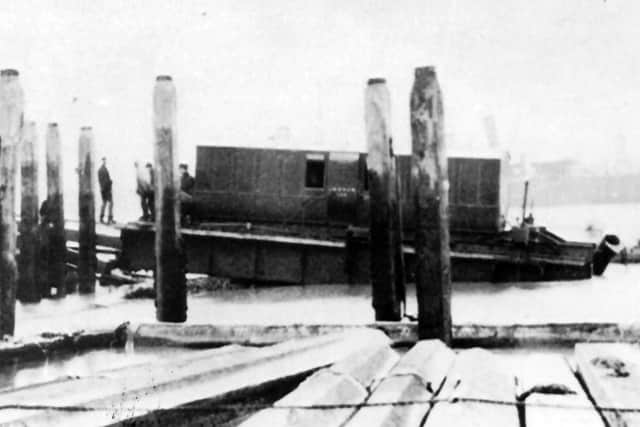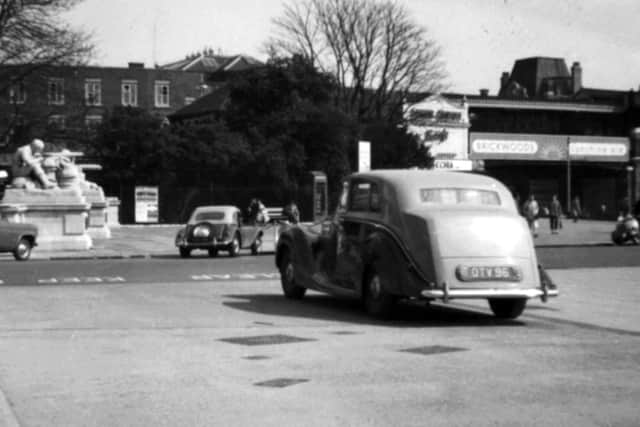NOSTALGIA: Why was Princess Elizabeth heading away from the station?


Then, she opened the Connaught Drill Hall, Stanhope Road, which had been been bombed in 1941.
The princess had arrived by train so can anyone tell me, why the royal convoy of cars are heading north along Commercial Road away from the station? Did she tour the city and perhaps go to Cosham to pick up the return train from there?Â
Advertisement
Hide AdAdvertisement
Hide AdOn the left photographers, including one from the Evening News, stood precariously on a ledge above Woolworth's and jewellers H Samuel.


For vintage bus fans, the leading one is a Corporation Craven with a Leyland body. Behind it was a Southdown Tiger coach.Â
'¢The second picture is a scene perhaps more recognisable to those who trained as gunners at HMS Excellent, Whale Island.
The training was remorseless. Gunners became some of the most feared men in the navy. They usually ended up as drill instructors and when they said '˜move' or '˜stand still', you moved or stood completely still '“ believe me.Â
Advertisement
Hide AdAdvertisement
Hide AdIn this picture, we see a battalion coming off the island, but I cannot understand why the bass drummer is carrying his drum.


'¢Last week I published the photo of the railway carriage on what appears to be a barge.Â
Back in April, I wrote about when the troopship HMS Crocodile hit the railway viaduct running across the harbour to South Railway Jetty. As she approached the harbour mouth, thick fog descended. She was to berth at the jetty but because of the fog, the pilot mistook the viaduct for the jetty and the ship was brought alongside.The collision sent an 80-yard section of the viaduct into the mud along with three railway carriages '“  the leading one hanging over the gap.Â
Barry Cox and I were looking at the picture again and now believe this shows one of the fallen carriages.Â
Advertisement
Hide AdAdvertisement
Hide Ad'¢The final picture shows two controversial subjects: the lord mayor's car and the gunners at the entrance to the cenotaph off Guildhall Square.


There have been arguments about civic dignitaries having private cars. But in 1961, I don't suppose people would've thought anything of it.
The cenotaph is different. I and many others hope the closed Drift Bar, where the phone box is, will be demolished and access to the cenotaph opened up again. It was an outrage that the civic offices and pub were built there in the first place. '‹'‹'‹'‹'‹'‹'‹'‹'‹'‹'‹'‹'‹'‹